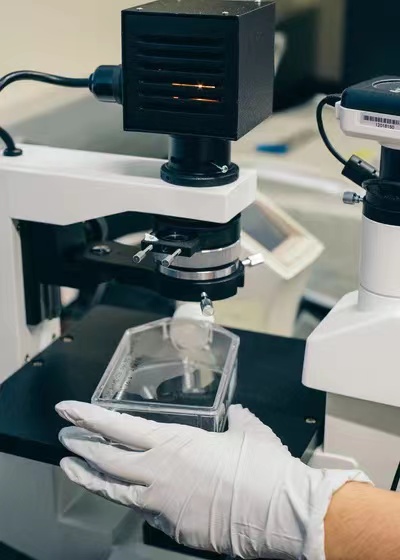创新背景
伦敦大学学院大奥蒙德街儿童健康研究所的研究人员在《自然生物医学工程》上发表了一项开创性的国际研究,他们开发了一种光敏生物凝胶,利用光处理将健康的新组织直接“打印”到特定的组织和器官中,并维持血液供应,使其茁壮成长。
创新过程
研究人员将精心挑选的细胞装入一种液体凝胶中,以适应要打印的组织类型。然后用一个简单的注射器将生物凝胶注射到身体感兴趣的区域。就位后,研究小组从体外向该区域发射近红外光。生物凝胶内部的聚合物在这种波长的光下结合在一起,一层一层地固化3D结构,并允许细胞到达所需的位置。在这些结构的支持下,细胞适应并连接到它们的新环境,形成新的组织。

最初在老鼠的皮肤和大脑上进行了测试,该团队的技术——被称为“活体3D打印”或“i3D生物打印”——也成功地在老鼠的肌肉上进行了测试,在不损害周围器官或组织的情况下生成了新组织。
此外,它不会在体内产生任何废物,有可能携带健康的供体细胞。如果孩子自己的细胞不适合或无法帮助修复或重建受损或缺失的组织,这可能会改变他们的一生。
项目负责人尼古拉·埃尔瓦索教授(伦敦大学学院GOS儿童健康研究所)的研究团队横跨ICH、意大利和中国,他说:“最近在3D生物打印方面的尝试需要直接接触组织和空间来操纵3D生物打印笔,以控制组织如何形成其形状和结构。这意味着他们专注于更容易接触到的身体部位,比如皮肤。我们非常兴奋的是,我们的技术在三维空间中更加可控,使我们能够准确地用3D图像显示感兴趣的解剖部位,并安全地打印出不容易通过大手术进入的新组织,比如大脑。”

第一作者、伦敦大学学院GOS儿童健康研究所的访问研究员安娜·乌尔乔洛博士说:“这是一个令人兴奋和具有挑战性的项目,它需要以多学科的方法融合新兴技术。通过在活体动物模型体内直接进行3D生物打印,我们能够以一种空间控制的方式交付供体肌肉干细胞,提高它们发育新肌肉组织的能力。”
这个国际团队包括意大利帕多瓦大学和威尼托分子医学研究所的研究人员,他们成功地在皮肤、肌肉和脑组织中“打印”了这种凝胶。
尽管仍处于临床前阶段,但这种组织工程研究可能会为有复杂身体状况的患者带来新的护理标准,特别是在器官受损的儿童的情况下。
创新价值
这是修复受损组织的重要一步,并提供了微创再生的可能性,这可能会改变未来治疗先天性畸形如脊柱裂和膈疝的方式。
创新关键点
研究人员将精心挑选的细胞装入一种液体凝胶中,以适应要打印的组织类型。然后用一个简单的注射器将生物凝胶注射到身体感兴趣的区域。就位后,研究小组从体外向该区域发射近红外光。生物凝胶内部的聚合物在这种波长的光下结合在一起,一层一层地固化3D结构,并允许细胞到达所需的位置。在这些结构的支持下,细胞适应并连接到它们的新环境,形成新的组织。
创新主体
伦敦大学学院(University College London,简称:UCL ),1826年创立于英国伦敦,是一所公立研究型大学,为伦敦大学联盟的创校学院、罗素大学集团和欧洲研究型大学联盟创始成员,被誉为金三角名校和“G5超级精英大学”之一。
UCL是伦敦的第一所大学,以其多元的学科设置著称,于REF 2014 英国大学官方排名中,位列全英之冠,享有最多的科研经费。UCL的医学、解剖学和生理学、建筑学、教育学、考古学、计算机科学、计算金融学等学科排名均位居世界前列,与LSE并称为“英国现代经济学研究的双子星”;其人文学院颁发的奥威尔奖则是政治写作界的最高荣誉。
Innovative "living 3D bioprinting" to create new tissues
The researchers loaded carefully selected cells into a liquid gel adapted to the type of tissue to be printed. The biogel is then injected into the area of interest of the body using a simple syringe. Once in position, the team fired near-infrared light into the area from outside the body. The polymers inside the biogel bind together under this wavelength of light, curing the 3D structure layer by layer and allowing the cells to reach the desired location. Supported by these structures, cells adapt and connect to their new environment, forming new tissues.
Initially tested on the skin and brain of mice, the team's technique - known as "living 3D printing" or "i3D bioprinting" - was also successfully tested on muscle of mice, generating new tissue without damaging surrounding organs or tissues.
In addition, it does not produce any waste in the body and has the potential to carry healthy donor cells. If a child's own cells are not fit or unable to help repair or rebuild damaged or missing tissue, this can be life-changing.
Project leader Professor Nicola El Vaso (GOS Institute of Child Health, University College London), whose research team spans ICH, Italy and China, said: "Recent attempts in 3D bioprinting have required direct contact with tissue and space to manipulate a 3D bioprinting pen to control how tissue forms its shape and structure. This means they focus on more accessible body parts, such as skin. We are very excited that our technology is much more controllable in three dimensions, allowing us to accurately visualize anatomical sites of interest in 3D images and safely print new tissues, such as the brain, that are not easily accessible through major surgery."
Lead author Dr Anna Urciolo, a visiting research fellow at the GOS Institute of Child Health at University College London, said: "This is an exciting and challenging project that requires the integration of emerging technologies in a multidisciplinary approach. By performing 3D bioprinting directly in vivo in living animal models, we are able to deliver donor muscle stem cells in a spatially controlled manner, improving their ability to develop new muscle tissue."
The international team, which included researchers at the University of Padua and the Veneto Institute of Molecular Medicine in Italy, managed to "print" the gel in skin, muscle and brain tissue.
Although still in the preclinical stage, such tissue engineering research could lead to a new standard of care for patients with complex physical conditions, especially in the case of children with damaged organs.
智能推荐
创新CAR-T细胞疗法治疗白血病
2022-08-05一种由UCL研究人员开发的新型CAR T细胞疗法,旨在更快地靶向癌细胞并引起更少的副作用,对于以前无法治愈的急性淋巴细胞白血病(ALL)的儿童来说,已经显示出非常有希望的结果。
涉及学科涉及领域研究方向利用生物传感器和“间歇定量”技术,可量化精准测量细胞钙浓度
2022-08-08结合光致变色单荧光团生物传感器和间歇定量绝对测量开发测量细胞活性的新技术,可以轻松量化测量生物细胞中的钙浓度。
涉及学科涉及领域研究方向使用“高速光片”显微镜可实时观察活组织细胞
2022-08-08使用高速3D显微镜MediSCAPE捕获活组织结构的图像,实时检测组织健康状况。
涉及学科涉及领域研究方向创新研发“分子手术刀”清除细胞表面的无用蛋白质
2022-08-17斯坦福大学的化学家们开发了一种新的工具,可以将不需要的细胞表面蛋白质运送到它们死亡的地方。
涉及学科涉及领域研究方向